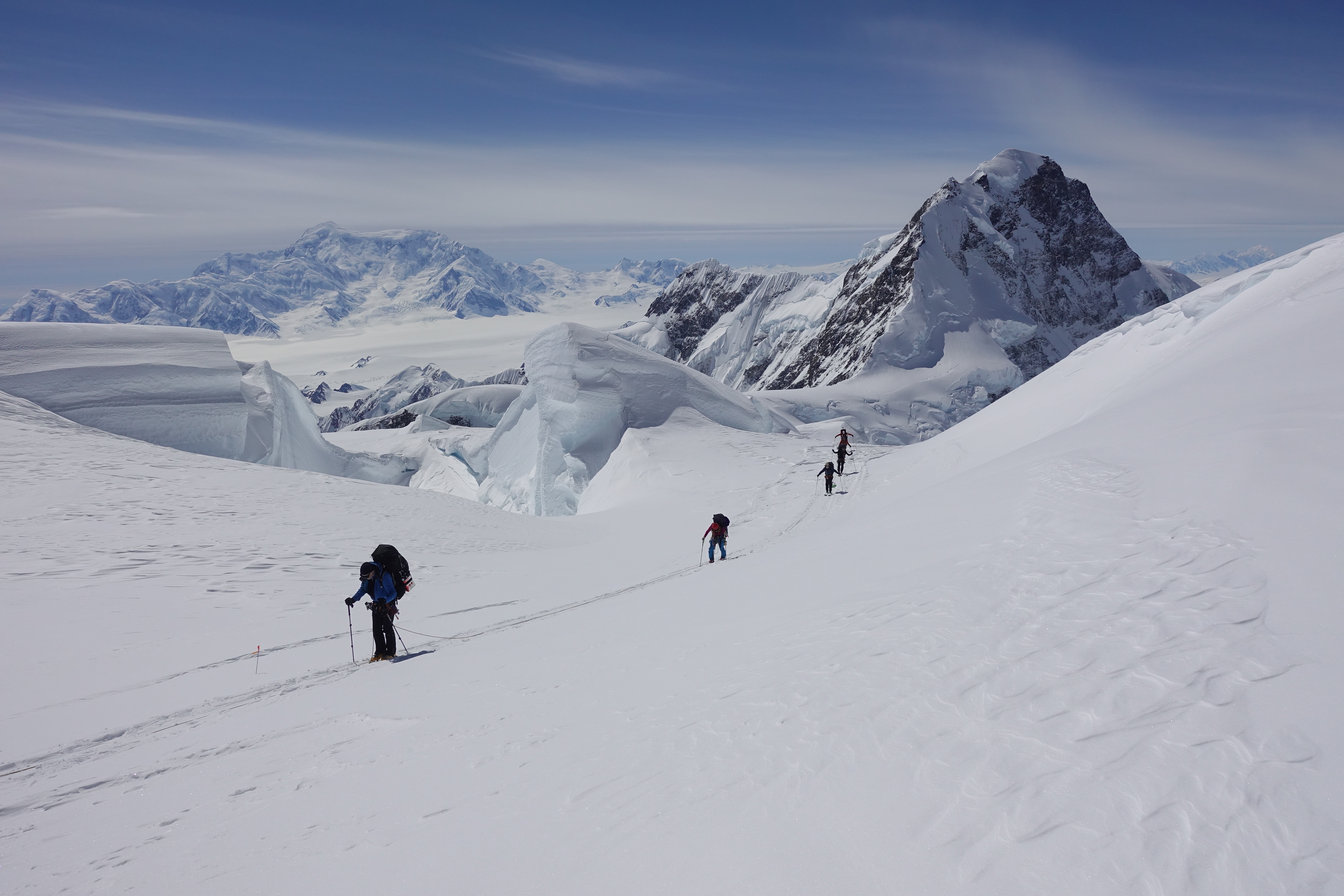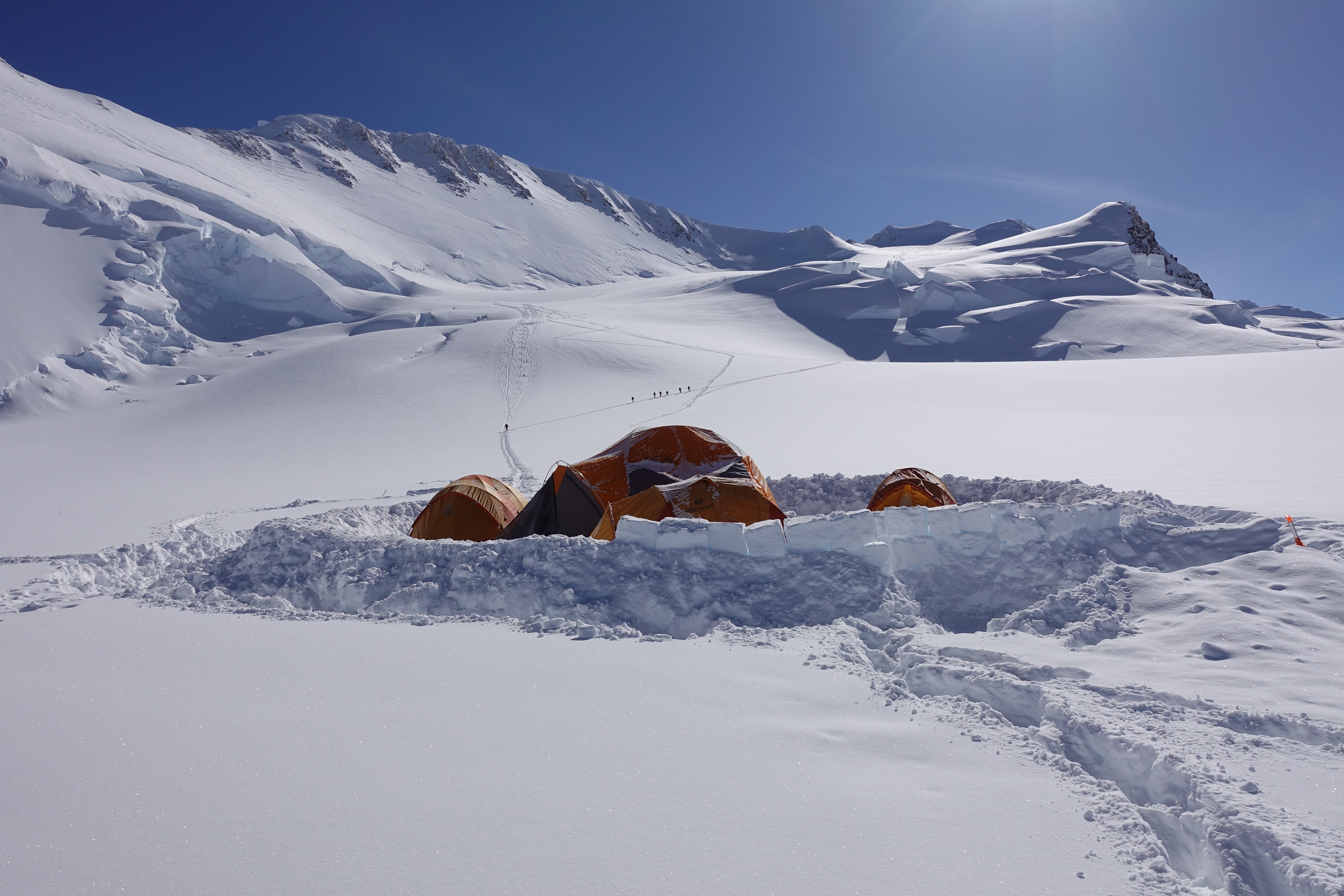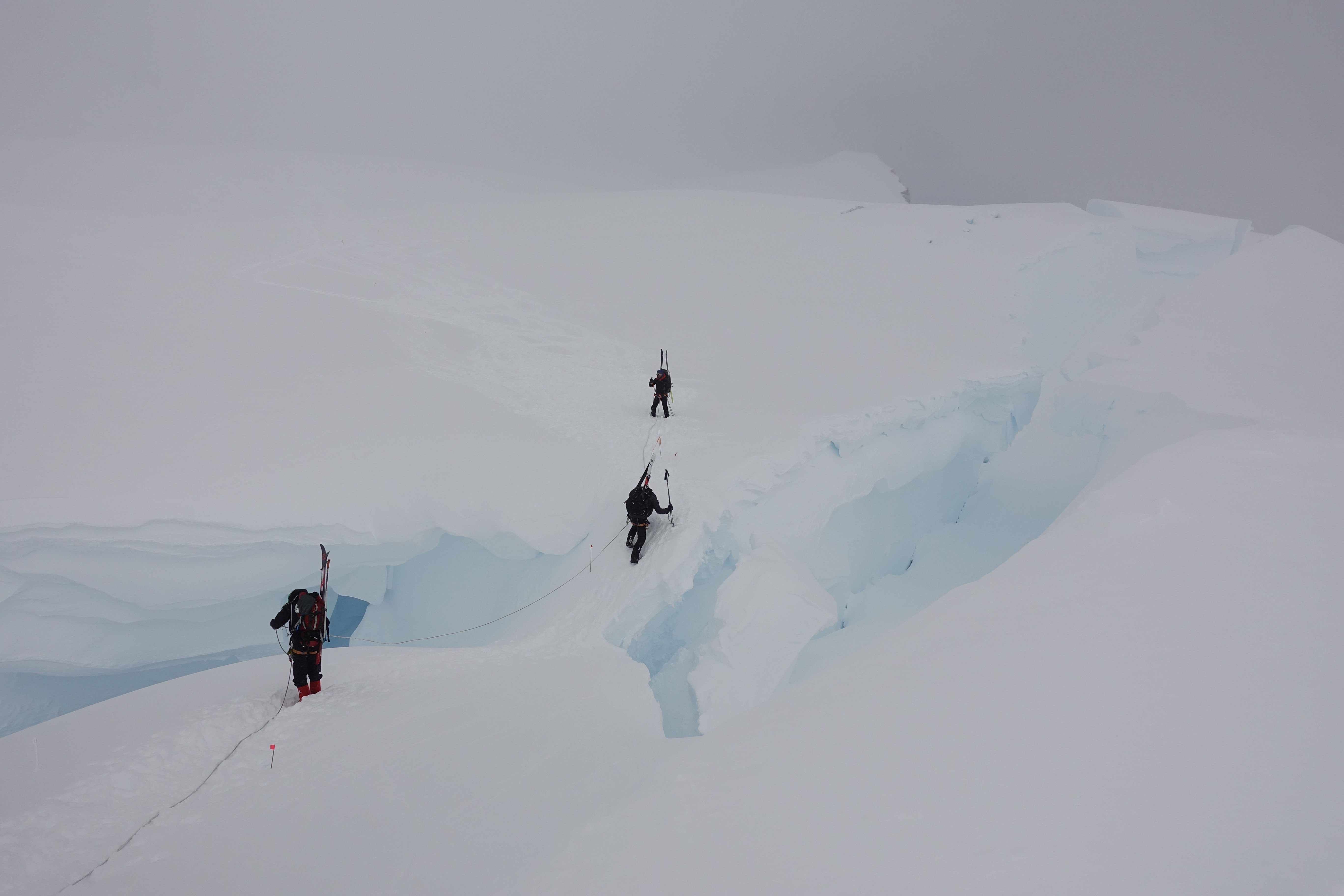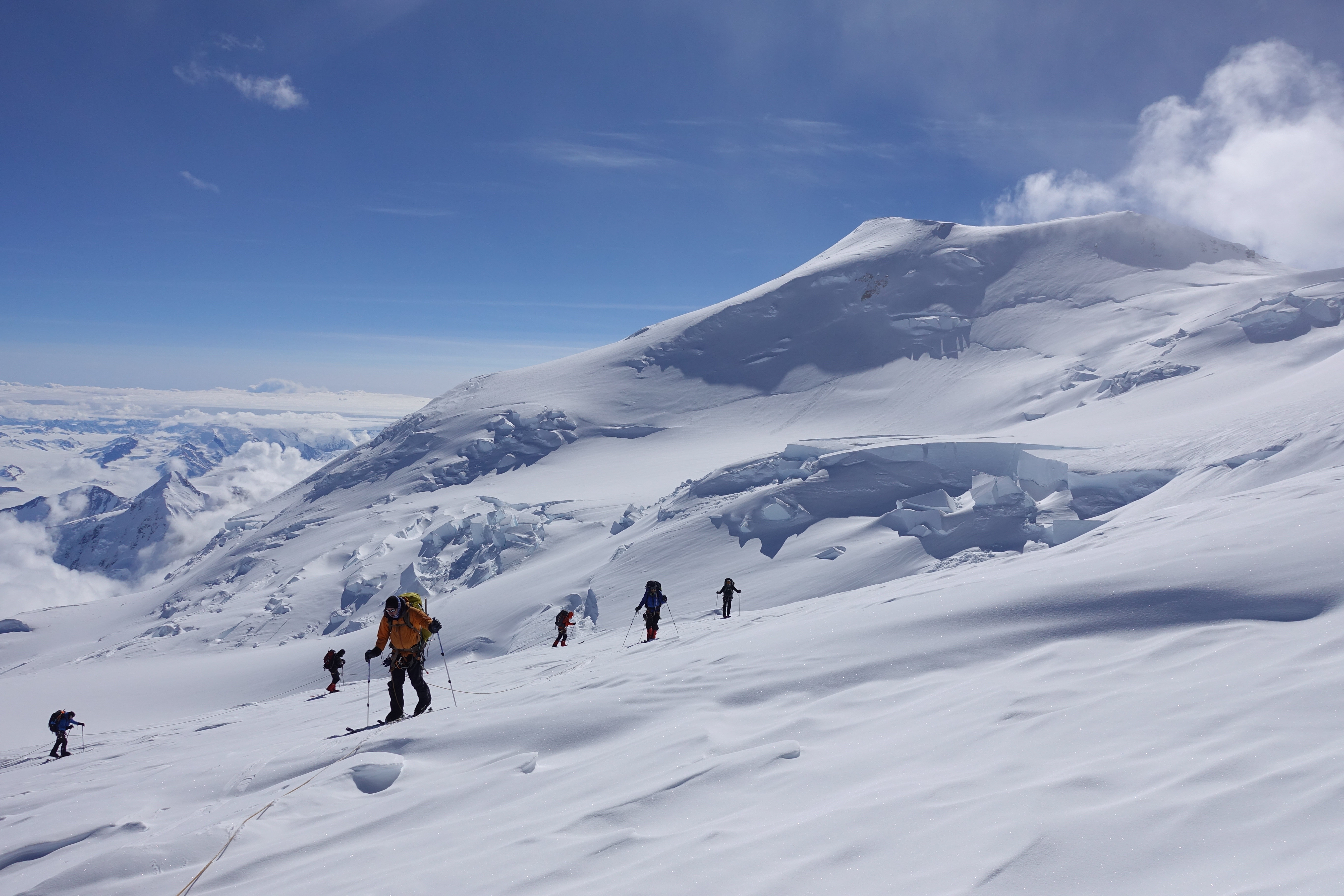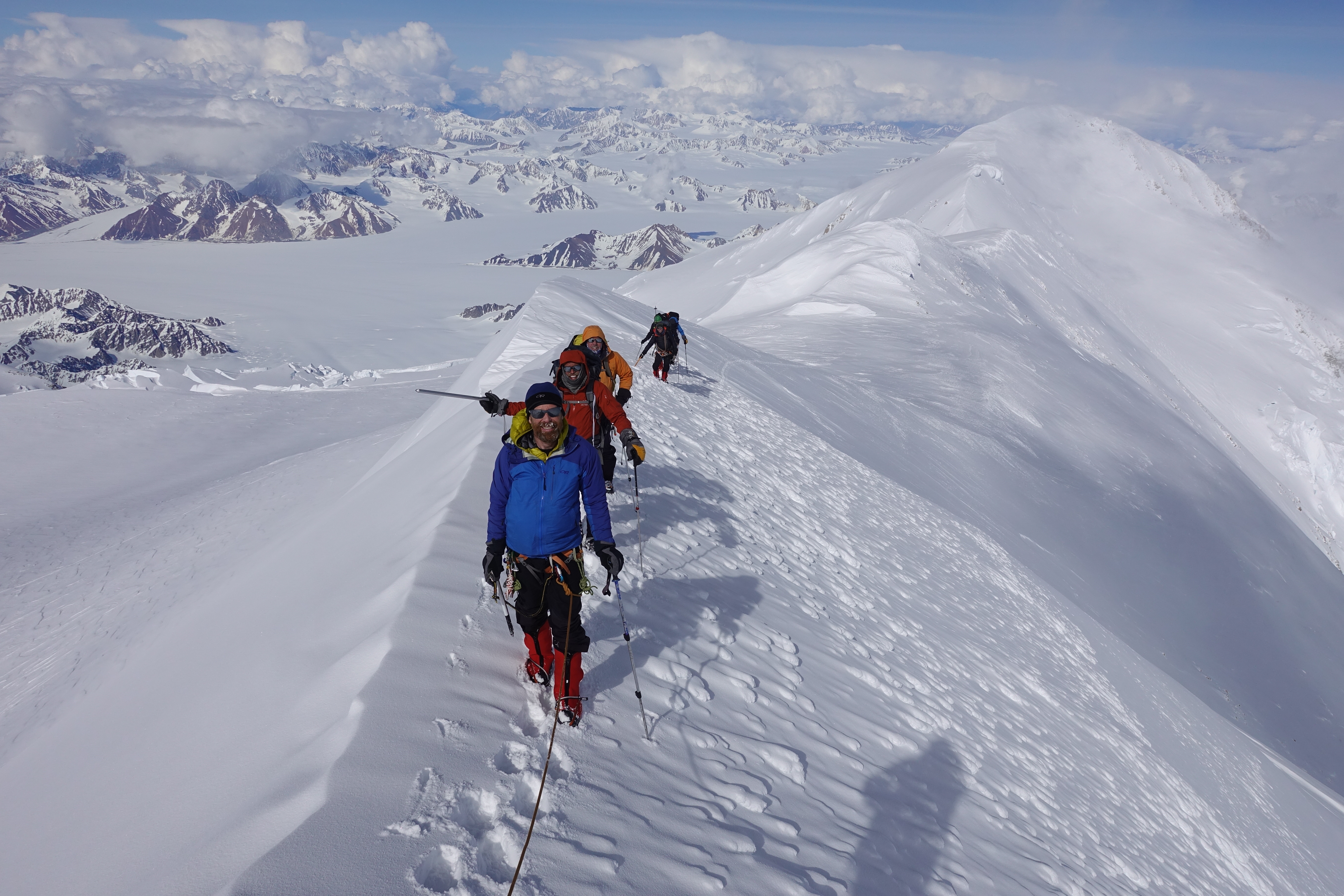Hi all,
We just finished guiding a successful ski ascent of Mount Logan over 18 days spanning May 20 to June 6, 2019.
Our group of 8, composed of 2 guides and 6 guests, ascended Canada’s highest peak via the King Trench route and summited on June 4th. We accessed basecamp from the Silver City airstrip in Yukon with the support of ski planes provided by Icefields Discovery. Their two turbo-charged Helio Courier ski planes are capable of taking 4 people in/out at the time in tandem. We waited 2 days to fly in due to poor weather however, there were no delays on our flight out. During our expedition, we traveled from 2750m to 5960m on the Quintino Sella Glacier, King Trench, Prospector Col and Summit Plateau areas on route to the main summit.
We saw pretty much every Spring weather condition imaginable the St-Elias Range has to offer. Luckily, the weather cooperated and allowed us to progress upwards fairly close to our scheduled itinerary. Earlier in the trip, it was very windy at all elevations. A strong southeasterly flow aloft was generating moderate-strong Easterly mountain winds. This delayed our intended starting date by a few days and parties on various routes were retreating. A lull in the weather allowed us to fly-in on May 20th and progress as planned from basecamp to the football field (4900m) by May 27th. We then endured a week long storm at the football field which helped us acclimatize while waiting for a weather window to tackle the summit. During that time, we got upwards of 60 cm of new snow accompanied by moderate southeast winds. The storm snow and winds created a small avalanche cycle while making uphill travel more challenging and improving the skiing quality. On June 2nd, a marked improvement in the weather allowed us to move camp onto the summit plateau (5040m) via the Prospector Col (5520m). Continued good weather conditions with minimal winds allowed us to summit on June 4th and start our descent the following day. Temperatures throughout were very seasonal. Above 4900m, we endured very cold overnight lows in the -25C to -30C range, daytime highs oscillated in the -15 to -5C range.
Traveling conditions, snow coverage and crevasses were generally excellent this year. Snowpack depth on glaciers was greater than 250cm and increased with elevation. Thinner snowpack areas were observed in some wind exposed locations. Crevasses were generally well bridged and less of concerned then previous years. That said, caution was required in some tension areas. Of note, the crevasses and snow bridges above the King Col head-wall (4200m) had changed significantly during the 10 days separating our ascent and descent. We actually had to alter our marked (wands) ascent route to avoid soft snow bridges over newly opened crevasses. The alteration was straightforward however, it was a good reminder that glacial movement can easily happened in a short time-span. Similarly, there is a growing crevasse issue (literally) at 5025m above the Football Field on route to Prospector col. A large crevasse is blocking the entire route and appear to be getting more problematic every year. It was only passable by boot packing down into the 10m wide crevasse and ascending a precarious uphill bridge/ramp to gain the far-side (see photo). There are no other way across at this time. Hopefully as the tension evolves, other opportunities will present themselves.
Gear wise, we used ski crampons, boot crampons and ices axe in specific locations. Ski crampons were useful for ascending the refrozen head-wall above King Col early in the mornings. They were also very useful for ascending to last few meters to Prospector Col as well as the final steep slope on the Northwest face of Logan (5800m) leading to the summit ridge. Boot crampons & ice axe were used to tackle the final ridge walk to the main summit where good cramponing on softer ankle-deep snow was found.
We believe our success is directly related to adequate group fitness, luck with the weather and decent mountain conditions on the route. That said, our ascent progression (carry high & sleep low) while taking strategic rest days also contributed to it. It is hard to know how we would have done physically without taking 6 forced rest days at the Football field (4900m). In the end, it seems as though patience and determination were almost as important as fitness and weather factors.
Feeling lucky to have had the opportunity to guide such a great group of folks up Canada’s highest peak!
All the best!
David Lussier
acmg mountain guide
&
Dan Morton
acmg ski guide
summitmountainguides.com

